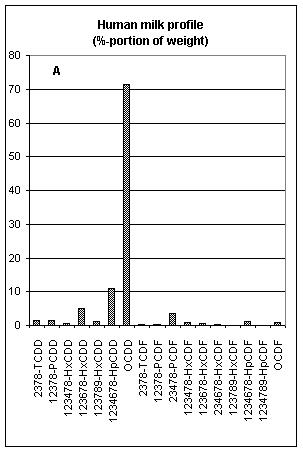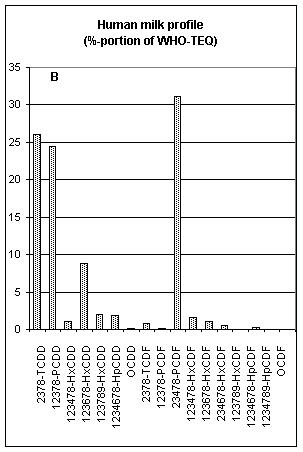TEq
| [show] This page is a encyclopedia article.
The page identifier is Op_en3577 |
|---|
TEq, TCDD equivalent quantity, toxicity equivalent (see also TEF). Different congeners of dibenzo-p-dioxins and dibenzofurans have many of the same biological effects but they are differently potent, meaning that different doses are needed to cause the same effect (Figure 8). E.g. 1,2,3,4,7,8-hexachlorodibenzo-p-dioxin (HxCDD) is one tenth as toxic as TCDD. To be able to assess the effects of a mixture, all congeners are “normalised” to the effects of TCDD, e.g. the amount or concentration of HxCDD is multiplied by the equivalency factor 0.1 (its TEF is 0.1). When all congeners are expressed as “equivalents of TCDD” they can be simply added and the sum gives the total toxicity of the mixture. Also the most important dioxin-like 50 THL – Report 14/2011 Synopsis on Dioxins and PCBs PCBs have been given TEF values, but it should be appreciated that PCBs may have other effects that cannot be expressed by a TCDDequivalency. (For more information on TEq concept and its use, see Van den Berg et al., Toxicol. Sci., 2006: 93: 223-241, http://pubmed.gov/16829543; Tuomisto, in R. Pohjanvirta (ed.) The AH Receptor in Biology and Toxicology, John Wiley & Sons, 2011).
[1]
See also
- TEF concept
- Ah receptor ligands
- TEF concept in environmental health assessment
- TEF concept and uncertainty analysis
- Additivity of TEFs
- TEF concept and ecology
- TEF concept and Ah receptor
- Estimating TEF values
- History of TEF concept

